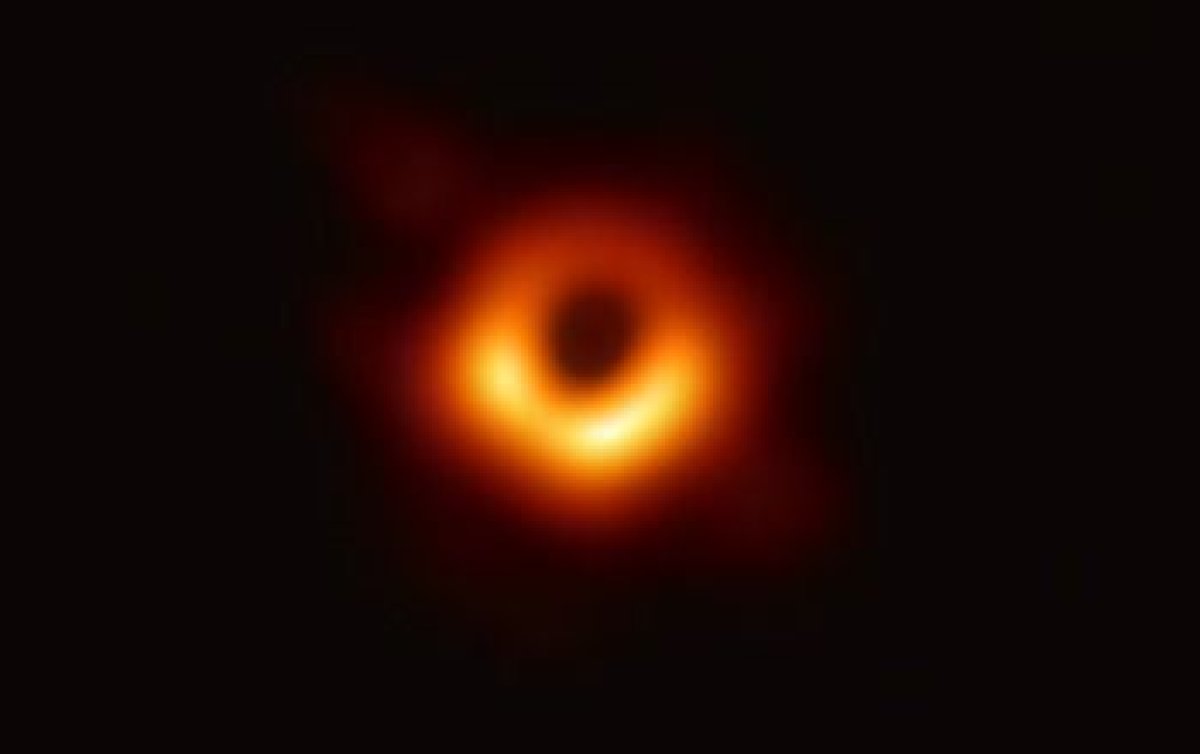Scientists have revealed the first-ever image of a black hole. The picture is the result of a global collaboration in which scientists linked together telescopes virtually to create one, huge, Earth-sized telescope.
The observation period, in April 2017, was followed by almost two years of data processing, and the resulting image has now been made public.

To mark the occasion, the Smithsonian Channel will be showing an hourlong documentary about the Event Horizon Telescope project. Black Hole Hunters follows the scientific team behind the EHT, showing a journey that would culminate in the groundbreaking announcement. It airs on April 12 at 9 p.m. ET.
Ahead of the documentary, Newsweek interviewed EHT scientist Katie Bouman about what obtaining an image of a black hole actually means. Bouman is the computer scientist who developed one of the algorithms used to decode the data.
What is a black hole and why is it important to get a picture of one?
A black hole is a singularity, where matter has collapsed into an infinitely small point in space. Gravity is so strong around a black hole that, once too close, nothing can escape its pull, not even light. Hot gas around a black hole is heated to hundreds of billions of degrees and glows brightly.
It has been predicted that the extreme gravity around a supermassive black hole would cause the light from this gas to bend around into a ring of light, what we call the black hole's "shadow." This ring is a signature of the black hole's event horizon. Einstein's equations of general relativity predict the size and shape of this ring. So seeing a picture of a black hole would not only be spectacular; it would also help to verify if these equations hold in the extreme conditions around a black hole, where they are most likely to break down.
How did the EHT project start?
As one of my fellow colleagues on the project, Jonathan Weintroub, recounts: "The technique of Very Long Baseline Interferometry was developed more than 50 years ago at longer wavelengths. In the mid-'90s to early 2000s, receiver and recording technology enabled the first one-millimeter wavelength VLBI, including a pioneering detection on SgrA* [*Sagittarius A, the black hole at the center of the Milky Way] between France and Spain [373 miles].
With observing at these short wavelengths now feasible, a small, and modestly funded group noticed that a 1-millimeter wavelength VLBI telescope array that spans the Earth could resolve the never before seen shadow of the largest black holes as seen from Earth.
With this mission, an informally constituted team developed the machinery necessary to make these observations. After some failures, the first event horizon scale observation was achieved with a detection, peeking above the noise, on a [roughly] 4,500-kilometer [2,800-mile] baseline between Mauna Kea, Hawaii, and Mount Graham, Arizona, in 2007. That success retired risk and set the focus on a larger imaging array. Other telescopes were enabled for EHT VLBI and joined in subsequent years, leading to the formal constitution of the international EHT Collaboration in 2014.
What were you expecting to see?
If Einstein was right, we expected to see a ring of light caused by the gravitational lensing of gas surrounding the black hole. This spinning gas would be Doppler-boosted so that the ring would appear brighter in the region where gas is moving towards us. If general relativity broke down at the black hole's boundary, we might see very different ring sizes or shapes or no ring at all.
Was there anything you were surprised at?
Although it was our best guess to see this perfect ring, I was in total disbelief. We had developed and tested our algorithms for years on data we thought would mimic that of the Event Horizon Telescope, but still there are always surprises in data. Pressing Go on a computer program I had written and immediately seeing a ring come into focus for the first time was amazing and exhilarating. We had prepared for years, but even so it was too easy! It was an unforgettable moment.
She used data from radio telescopes around the world stored on HUNDREDS of hard drives. Here is Dr. Bouman with just some of them. pic.twitter.com/1K2Ulpn6ma
— Kayla Iacovino Total Landscaping (@kaylai) April 11, 2019
The headline of this article has been updated.
Uncommon Knowledge
Newsweek is committed to challenging conventional wisdom and finding connections in the search for common ground.
Newsweek is committed to challenging conventional wisdom and finding connections in the search for common ground.
About the writer
Hannah Osborne is Nesweek's Science Editor, based in London, UK. Hannah joined Newsweek in 2017 from IBTimes UK. She is ... Read more
To read how Newsweek uses AI as a newsroom tool, Click here.








